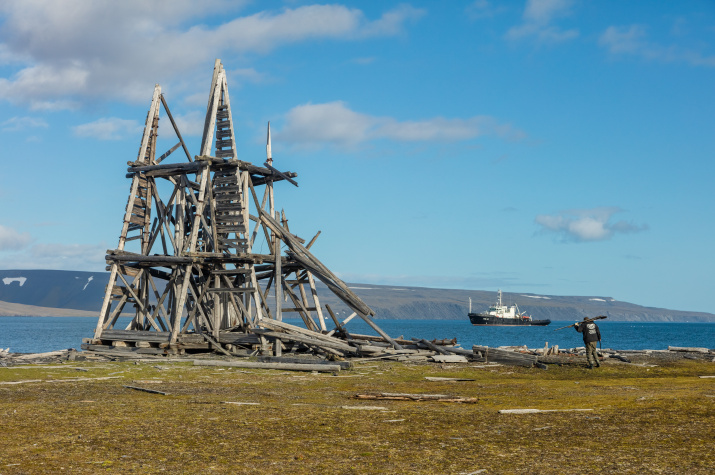Two hundred years ago, in 1821, Russian navigator Fedor Litke, who in the future would come up with the idea to form the Imperial Russian Geographical Society, made a scientific breakthrough in the exploration of the northern waters of Russia. During the four years of the expedition, he described all the coasts of Novaya Zemlya and compiled detailed maps that were used for the next hundred years. Today, the RGS continues historical traditions, combining two-century-long scientific research.
Historical and cultural project "The Main Face of Russia: History, Events, People", which unites all the joint Arctic expeditions of the RGS, the Ministry of Defense of the Russian Federation, and the Northern Fleet, has been held since 2018. Last year, the project won the RGS Award as the best long-term expedition in Russia. The wide geography of the explorations covers all major archipelagos of the northern seas.
The focus of specialists' attention in the new season is the water area of Novaya Zemlya. Among the important tasks of the complex expedition is to study the routes of polar expeditions of the past, conduct archaeological exploration, describe historical buildings and artifacts from the Great Patriotic War.
Last year, on the coast of the Matochkin Strait at Cape Baraniy, the remains of a wooden cross installed by the expedition of Fedor Litke were found. Through the joint efforts of the RGS and the Ministry of Defense of the Russian Federation, a new memorial cross was made, transported to Novaya Zemlya and installed. It became a symbol of historical continuity in the development of the Arctic and the inviolability of the Russian presence in this region.
This year, the experts plan to explore six areas of the archipelago. Hydrographers on the icebreaker “Ilya Muromets” will make the transition from Severomorsk to the coast of Yuzhny Island – the only area of the archipelago currently available for deployment.
The first stop of the route will be the village of Belushya Guba. It is one of two settlements of Novaya Zemlya with a permanent population. In the 1950s, a nuclear test site was created here, as well as a base for a special division of submarines of the Northern Fleet. On the coast of the Kostin Strait, the remains of Pomor encampments with ancient huts, as well as ship frames and traces of military airfields have been preserved.
The next exploration area will be the southern tip of Novaya Zemlya. Here, the focus of archaeological exploration is the camp of another Russian Arctic explorer, Vladimir Rusanov, who in 1907 surveyed the waters of the archipelago on a Nenets karbass, and then repeatedly returned here to explore the western coast of the archipelago.
The eastern part of Yuzhny Island is interesting because of the preserved objects from the camps of Fedor Litke's expeditions – huts and commemorative crosses. The remains of the winter quarters of Fedor Rozmyslov were found on the coast of the Matochkin Strait, in the area of Cape Drovyanoy as well. He was a polar traveler, who in 1768 was conducting geophysical surveying here, aiming to find minerals in these places. The result of his expedition was a detailed description of the Matochkin Strait, which was used by Fedor Litke half a century later. Last season, experts reconstructed the route of Fedor Rozmyslov; in the tasks of 2022 is to describe the found buildings and burials related to these expeditions.
In addition to archaeological work, specialists will conduct a systematic study of the deployment locations and the locations of airfields and military units of the fleet during the Great Patriotic War, as well as monitor cultural and natural heritage sites of the region.
The historical and cultural project of the RGS and the Northern Fleet "The Main Face of Russia: History, Events, People" has been held since 2018 and unites all joint expeditions in the Arctic region. The extensive geography of the project includes the archipelagos of Novaya Zemlya, Franz Josef Land, Severnaya Zemlya, the Taimyr Peninsula, the Novosibirsk Islands, and Wrangel Island. All these are not just land plots, but pages of the tragic and heroic history of Arctic exploration.
Julia Gopius

